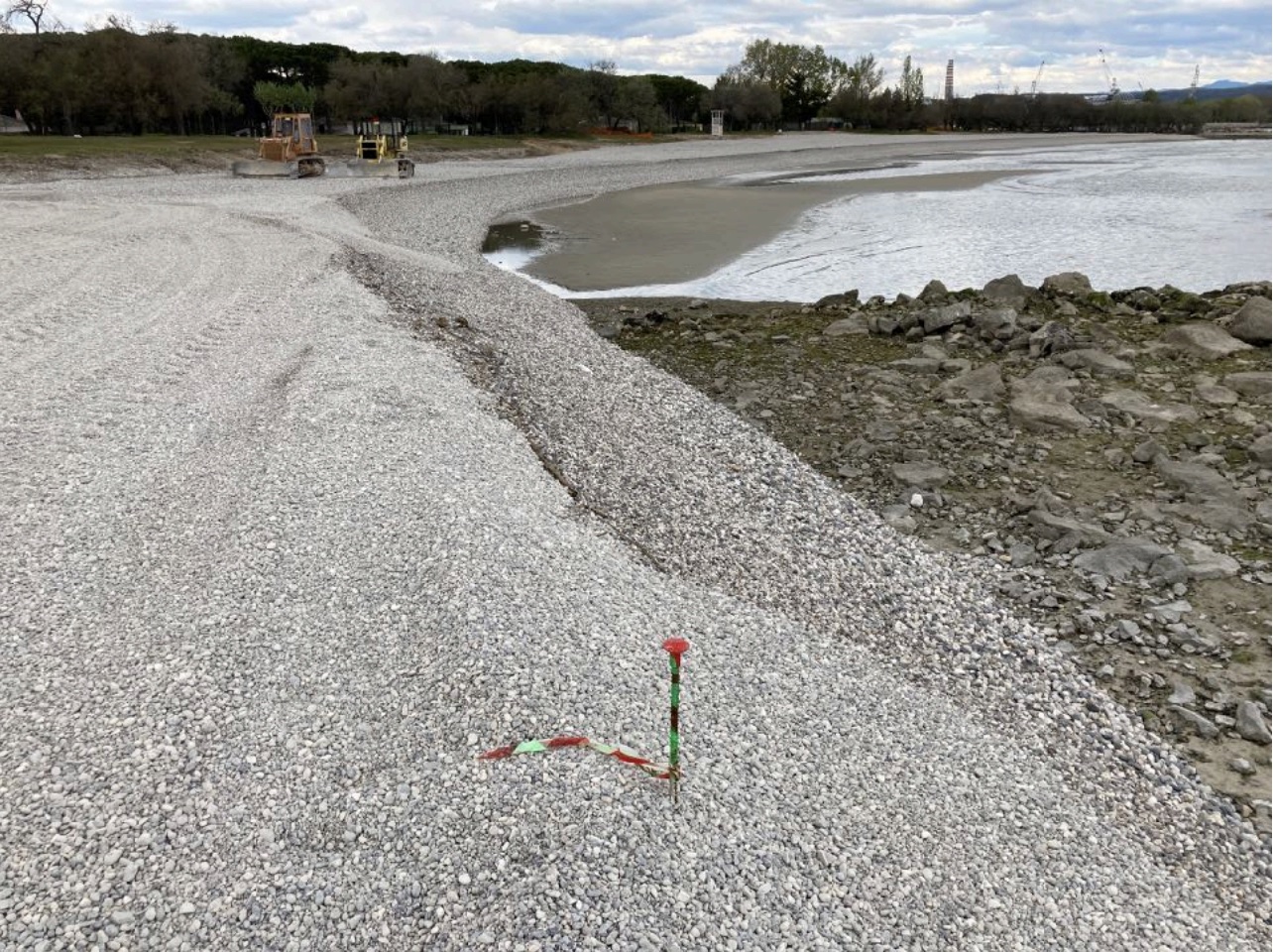In Peru setzen sich Surfer für den Schutz perfekter Wellen ein und damit für den Schutz der Küsten – ein schönes Beispiel fürs Schützen beim Nutzen. Es zeigt freilich auch, dass Strandschutz weltweit zu kurz greift.
(mehr …)think.fish blog
-
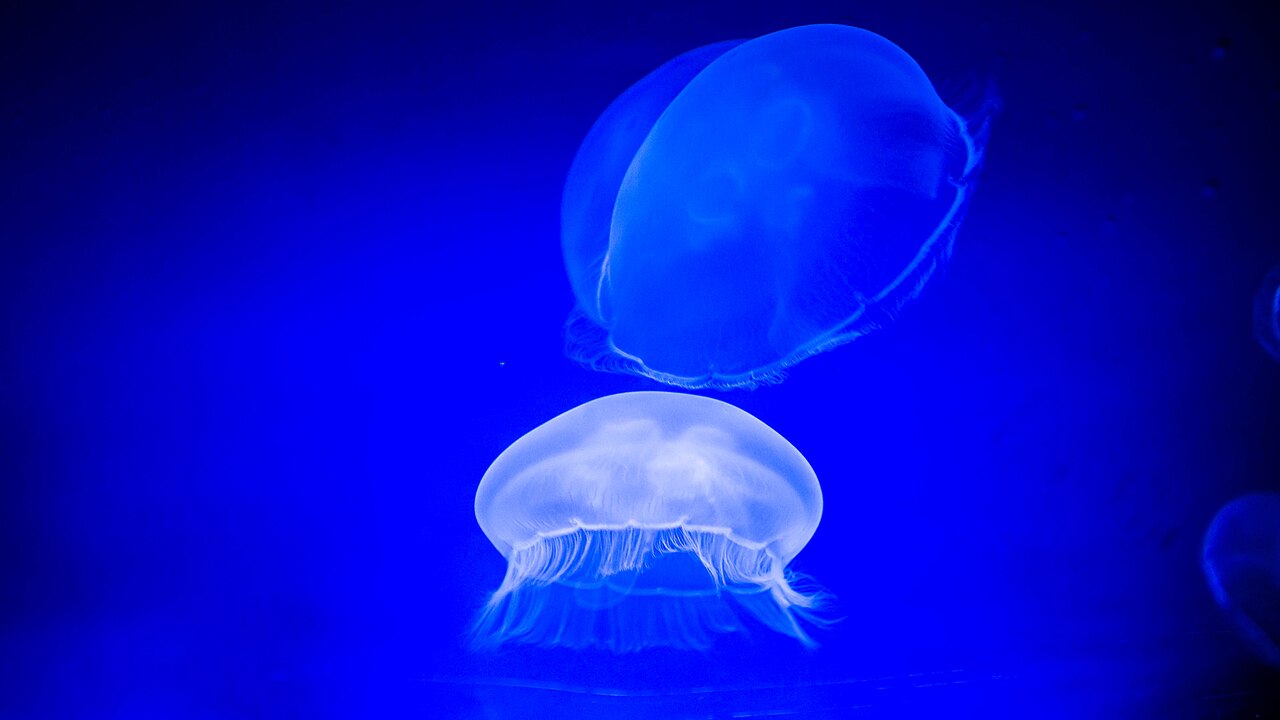
Natur schiesst mit Nesseln zurück
Sommerloch. Es treten auf: die üblichen Verdächtigen aus dem Tierreich. Wo einst das Ungeheuer vom Loch Ness wohligen Schauer in sicherer Distanz bescherte, sind es heute riesige Welse, die an Badeseen in die Waden beissen, und Quallen, deren Nesselstiche meist sehr unangenehm sind und – in seltenen Fällen – sogar tödlich sein können, was «Spektrum der Wissenschaft» zum etwas reisserischen Titel «Tod durch Quallen» verführte [1].
Tatsächlich hat die Quallendichte an zahlreichen Badestränden in den letzten Jahren deutlich zugenommen. Warum?
Touristen sind Konsumenten – wie du und ich – und als solche mitschuldig an der störenden Qallenplage; aus zwei Gründen. Zum einen reduzierte die zunehmende Überfischung der Meere die Zahl der natürlichen Fressfeinde der Quallen. Vor allem die Thunfische, die für ihre enorme Schwimmleistung viel Energie benötigen und darum alles fressen, was ihnen vor den Rachen kommt, hielten einst die Quallen in Schranken. Zum anderen gehören Quallen zu den wenigen Gewinnern der steigenden Meerestemperaturen, denen sie sich besser anpassen können als viele andere Wassertiere. [2]
Quellen:
[1] https://www.spektrum.de/kolumne/qualvoller-tod-durch-qualle-gefahr-auch-in-europa/2276602 (Bezahlschranke)
[2] https://www.srf.ch/wissen/natur-tiere/vorsicht-qualle-glibbertiere-auf-dem-vormarsch-das-steckt-dahinter und https://www.n-tv.de/wissen/Quallen-werden-immer-mehr-article15728706.html
Titelfoto:
Quallen (Foto: Nicola from Fiumicino / Wikimedia Commons) -
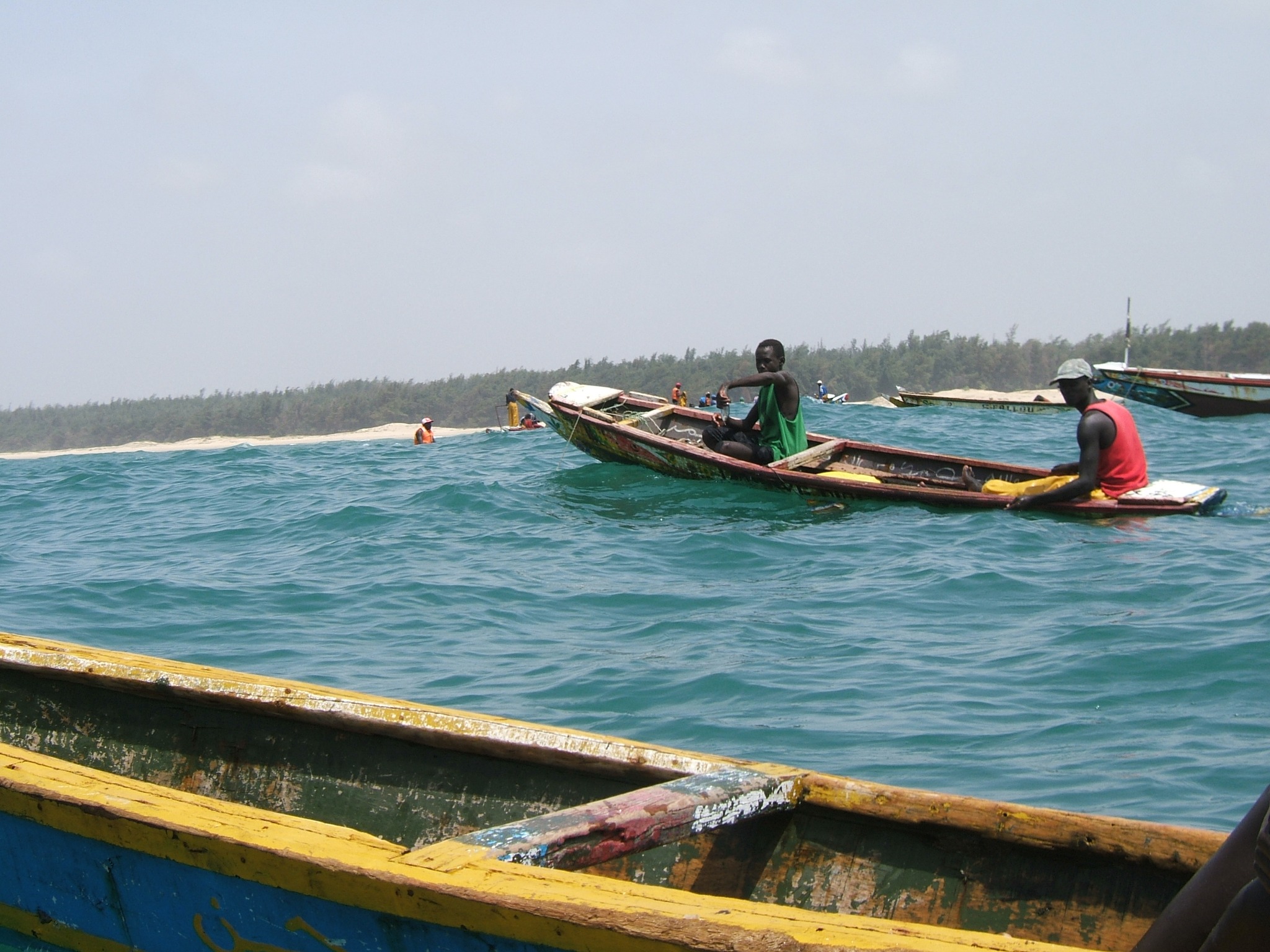
Small fisher(wo)men make a big difference
Small-scale artisanal fisheries are largely underestimated in terms of their catch volumes and contribution to the local economy — and at the same time they are adversely affected by industrial fishing, offshore aquaculture, tourism and other uses of coastal waters. Assessing the value and importance of small-scale fisheries is a crucial step towards countering the threats they face. This also benefits fishes, because if fisheries can minimise the suffering of the animals concerned, small-scale fisheries are more likely to succeed than their industrial competitors, which use heavy fishing gear.
(mehr …) -
Small fisher(wo)men make a big difference
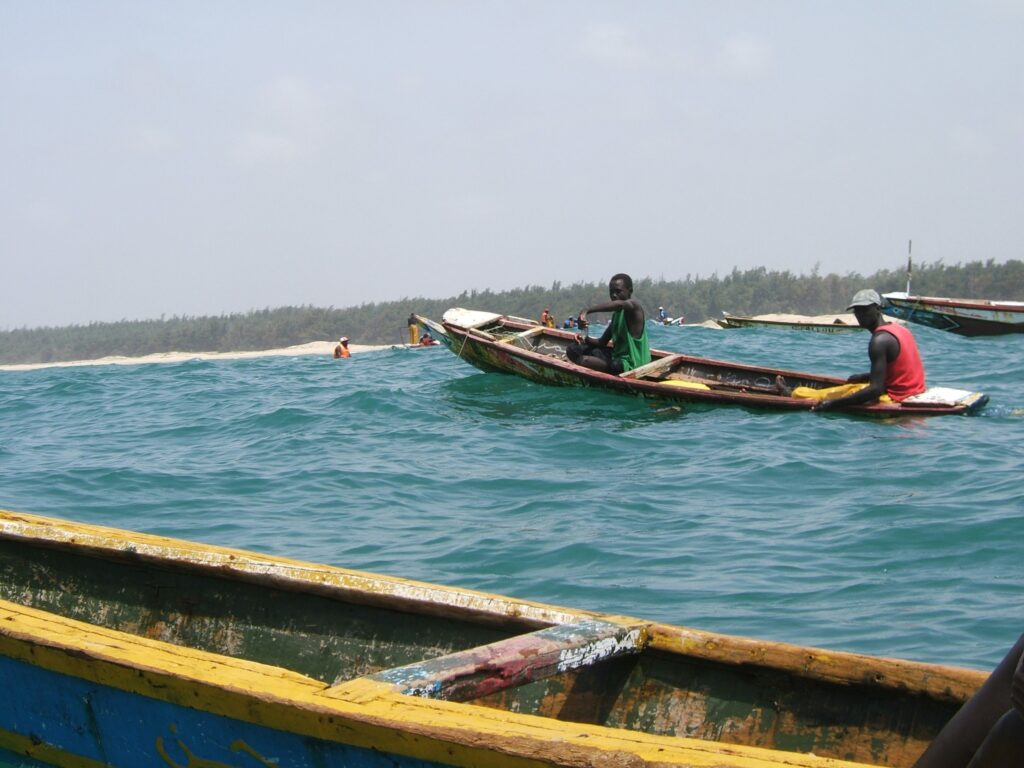
Handliners on the coast of Kayar, Senegal (photo: Billo Studer) Small-scale artisanal fisheries are largely underestimated in terms of their catch volumes and contribution to the local economy — and at the same time they are adversely affected by industrial fishing, offshore aquaculture, tourism and other uses of coastal waters. Assessing the value and importance of small-scale fisheries is a crucial step towards countering the threats they face. This also benefits fishes, because if fisheries can minimise the suffering of the animals concerned, small-scale fisheries are more likely to succeed than their industrial competitors, which use heavy fishing gear.
(mehr …) -
Has cod really recovered in Canada?

Atlantic cod (credit: Patrick Gijsbers / Wikimedia Commons) For thirty years, Atlantic cod (Gadus morhua) has been a symbolic example of the irreversible collapse of a fish stock due to continued overfishing. Now cod appears to be recovering, but experts are urging caution and resisting overly optimistic pressure from the industry.
In 1992, the Canadian government was forced to impose a ban on cod fishing. The once abundant stock in the Northwest Atlantic, which provided a livelihood for thousands of fishermen, still yielded an annual catch of 250,000 tonnes at the end of the 1980s after more than a century of reckless fishing, but was eventually completely decimated.
The moratorium was initially imposed for two years, but as there were no signs of recovery, it was repeatedly extended and ultimately lasted 32 years, causing many fishermen to lose their livelihoods. Now, however, the species is finally recovering. ’This much cod hasn’t been caught in the inshore since 1991, so we’re navigating new ground’, says the head of fish processing company Icewater Seafoods, Canada’s largest cod processor, which is facing changes to cope with the sudden catch level. [1]
But how much has the cod stock really recovered? A year ago, experts warned against giving in to the industry’s excessive optimism [2]. This year, too, experts are critical of the government’s lifting of the moratorium. According to their studies, the cod stock has only partially recovered, to 38 per cent of its peak in the 1960s. The decline of the cod stock was mainly due to the collapse of the capelin (Mallotus villosus) stock, the main food source for cod, in the early 1990s. And as capelin continue to decline, there are clear limits to the further recovery of cod. ‘Until capelin rebounds, this really isn’t the time to ramp up fishing,’ said a representative of the non-governmental organisation Oceana. [3]
References:
[2] https://www.facebook.com/groups/think.fish/posts/1008275744184804/
[3] https://www.france24.com/en/live-news/20250604-canada-s-reopened-cod-fishery-on-shaky-ground
-
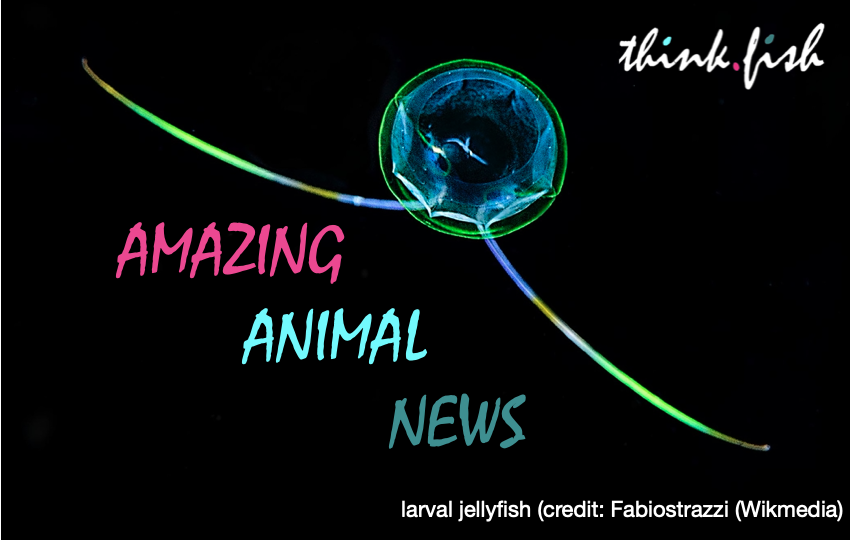
Amazing Animal News 07/2025
#1: Fernsäugende Wale
Wale sind Säugetiere, haben aber keine Zitzen. Walmütter spritzen ihre sehr fette Milch ins Wasser, aus dem die Jungen sie trinken.
https://www.facebook.com/groups/202421163127995/posts/24015729271370517/
(mehr …) -

Neues aus dem Tierreich
#1: Fernsäugende Wale
Wale sind Säugetiere, haben aber keine Zitzen. Walmütter spritzen ihre sehr fette Milch ins Wasser, aus dem die Jungen sie trinken.
Mehr dazu… (mit Dank an «Wir schützen die Meere».#2: Warum der Blauhai blau ist
Eine spezielle Nanostruktur von Tausenden kleiner, spitzer Schuppen dieser Haiart (Prionace glauca) führt zur blauen Färbung. Die Schuppen enthalten Guanin-Kristalle, die blaues Licht reflektieren, und kleine Bläschen mit den Farbstoff Melanin, der das Licht anderer Wellenlängen absorbiert. Je nach Wasserdruck und Temperatur kann sich die Farbe aber auch verändern; der Blauhai erscheint dann tiefblau, grünblau oder golden.
(mehr …)
Mehr dazu… -
Nicht ans Mittelmeer fahren hilft
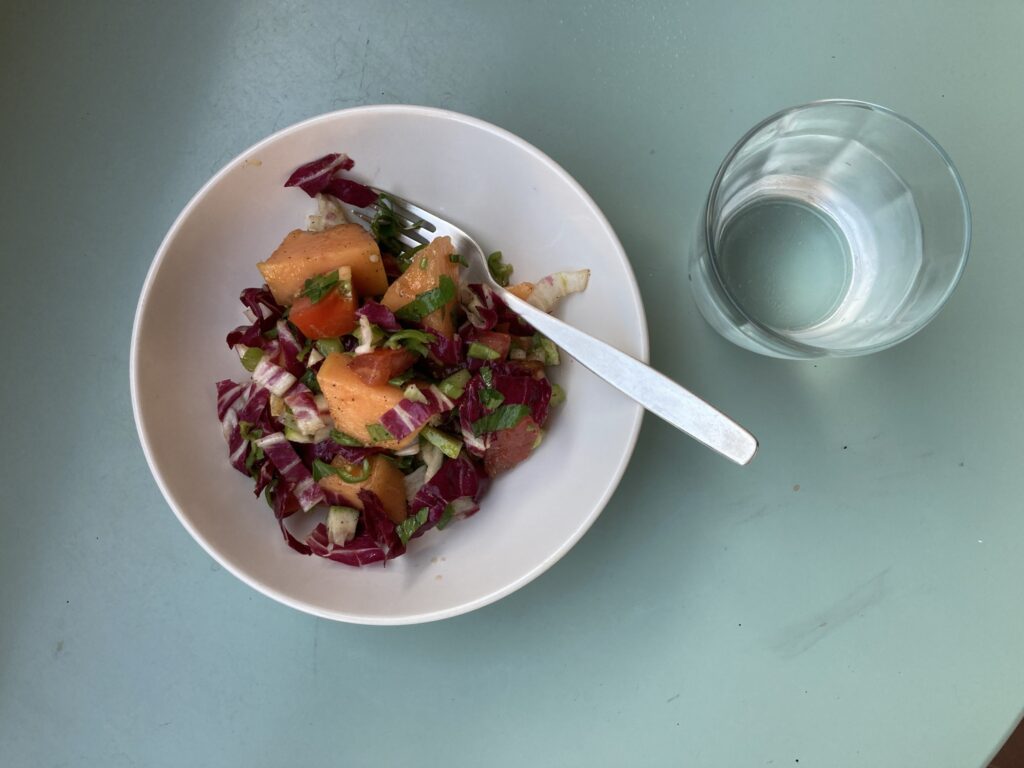
Kühlung von innen: Melonen-Chicorée-Salat und Kräuterwasser aus dem Kühlschrank (Foto: Billo Heinzpeter Studer) Ich mache hier Negativwerbung für meine Ferienwohnung am Meer: bleib zuhause! Denn jeder Strandbadegast ist einer zu viel, genauer: Ich bin das Problem, du bist das Problem, wie der dänische Soziologe Nikolay Schultz in seinem Essay «Landkrank» im Selbstversuch und damit für uns alle festgestellt hat. [1]
(mehr …) -

Amazing Animal News 06/2025
#1: Orcas use kelp as a grooming tool
Researchers from the Center for Whale Research in Friday Harbor, Washington, have observed an unknown behaviour in southern orcas, who treat sticks of kelp stems into suitable shapes and sizes to groom each other.
https://www.nbcnews.com/science/science-news/orca-killer-whales-kelp-tools-rcna213895
(mehr …) -
Bottom trawling: ‚improved‘ and therefore ‚green‘?
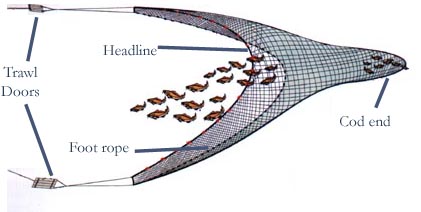
Bottom trawl (drawing by Anilocra / Wikimedia) We recently discussed US fisheries biologist Ray HiIlborn’s criticism of David Attenborough’s film ‘Ocean’, in which bottom trawling is portrayed as a very harmful fishing method — unjustifiably so, according to Hilborn, who claims that bottom trawling is a ‘vital method of procuring healthy protein’. [1]
(mehr …)
In order to be less dependent on social media, whose owners pursue their own private goals, think.fish posts will first appear on our own blog.
Summaries with a link to our blog will be posted on Facebook, LinkedIn, Substack, Bluesky, Telegram, Mastodon, and Instagram.
Suche:
Übersetzen · Translate
Alle Themen · All topics:
Stichwortliste · Keyword list
animal suffering Animal welfare artisanal fisheries Batäubung Belt-and-Road-Initiative Blauhai Bosporus bottom trawl bycatch Canada Catch Welfare Plattform certification CFFA CAPE Chancay Chile China Containerhafen Don Staniford Erderwärmung escapes EU Europa Exclusive Economic Zone EEC fair-fish fair-fish database Faroe Fischereiabkommen Fischereisubventionen Fischmehl Fischöl fisheries agreements fisheries management FishEthoGroup fish meal fish oil Fish stocks Fish welfare Gesellschaft Greenpeace Humpback whale ICES ICSF Intelligenz International maritime law Invertebraten Kognition Korruption labels Lachs Lachszucht Litopenaeus vannamei Marine Protected Areas (MPA) migration mortality Mycroprotein Nervensystem North-east Atlantic Oceana Oktopoden Omega-3 Ostsee Pacific whiteleg shrimp Pakistan Panamakanal Parasiten Peru Philippines phytoplankton play Pole and line Polen Rainer Froese Raumfahrt Ray Hilborn Reducing animal suffering Salmon Sandtigerhai Schifffahrt Schottland sea lice Seawater Cube Senegal Slapp small-scale fisheries small scale fisheries stocking density Tierleid Tierschutz Tintenfische UK US Navy Venezuela Westafrika whales Whale shark Wirbellose WTO Zivilisation Zooplankton Überfischung

